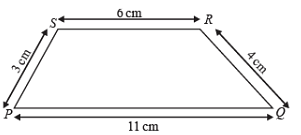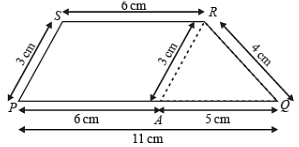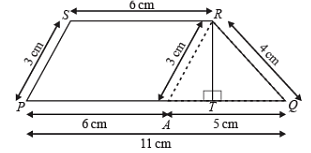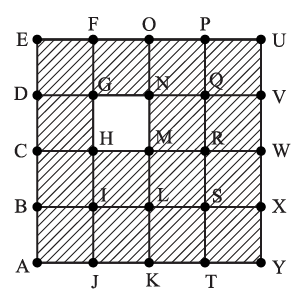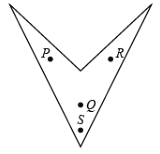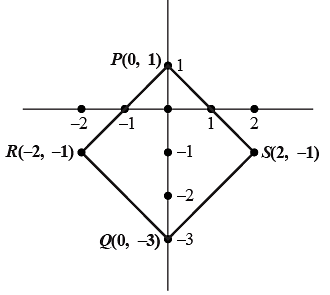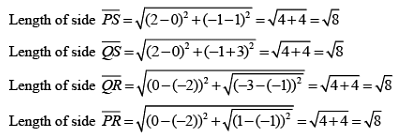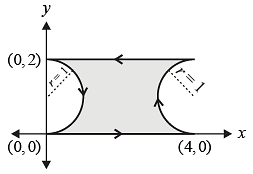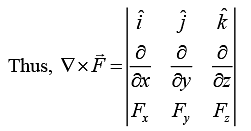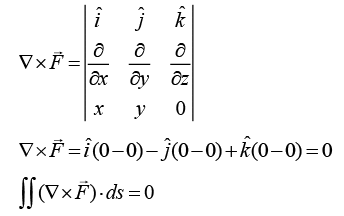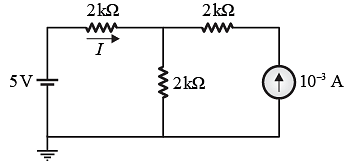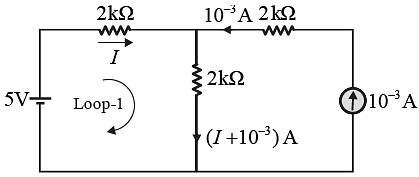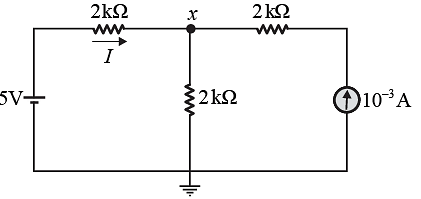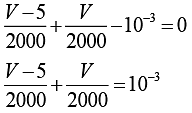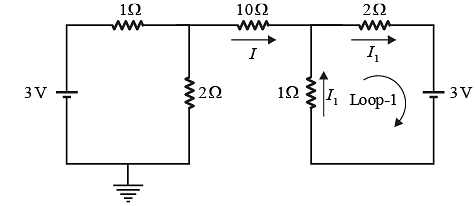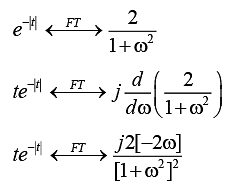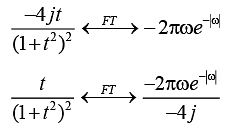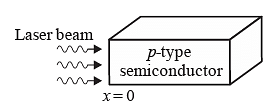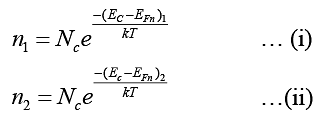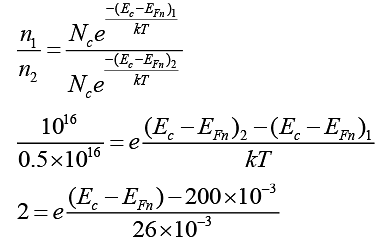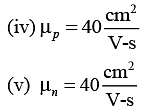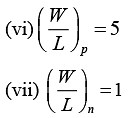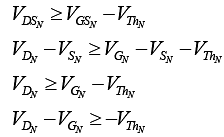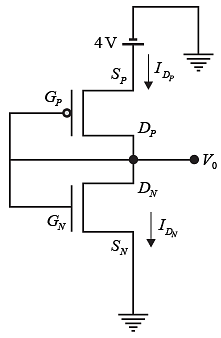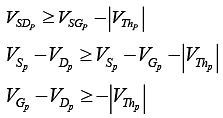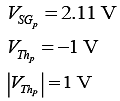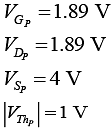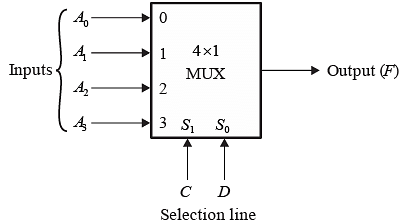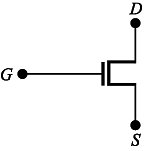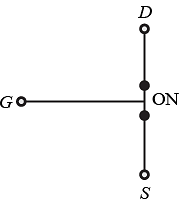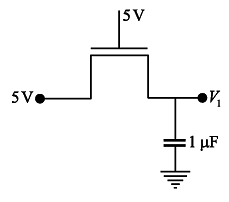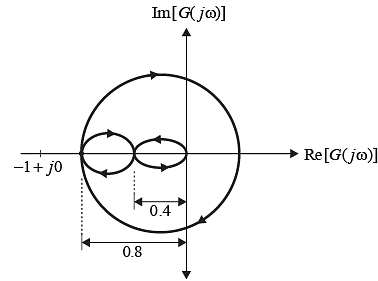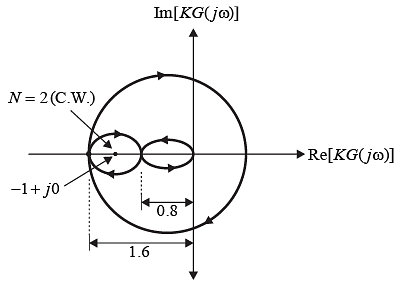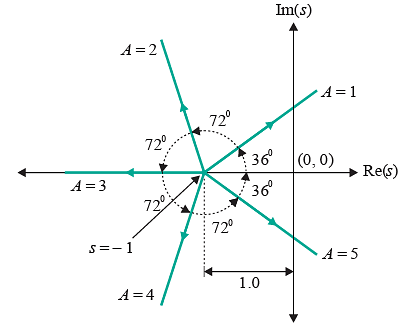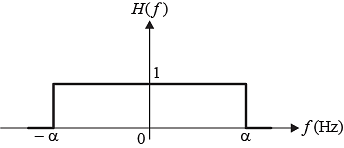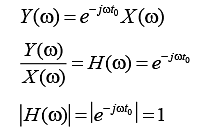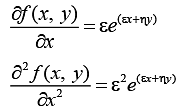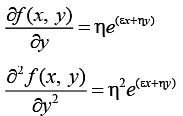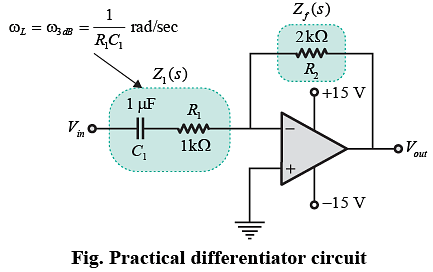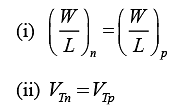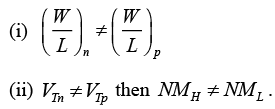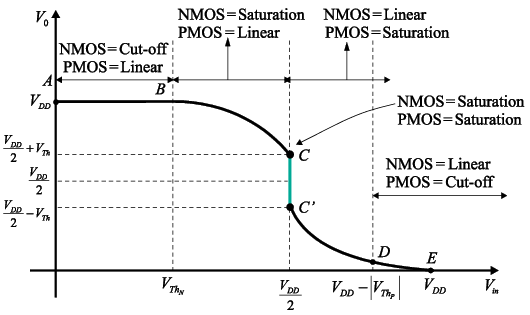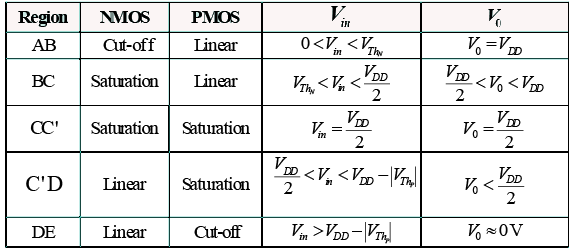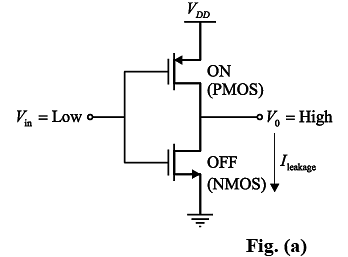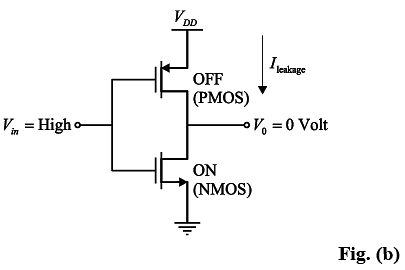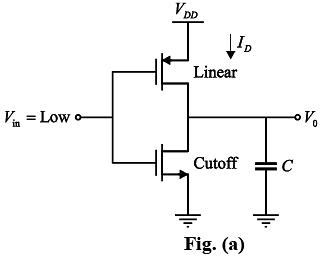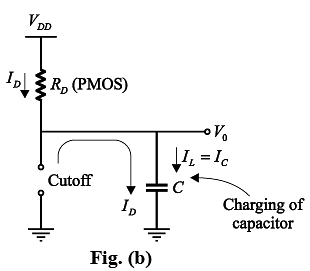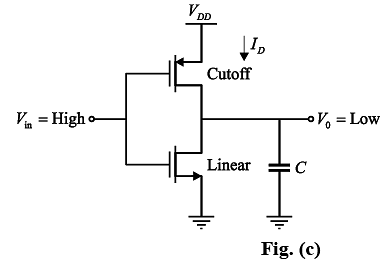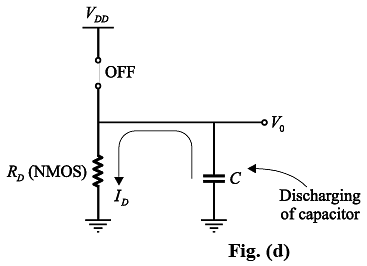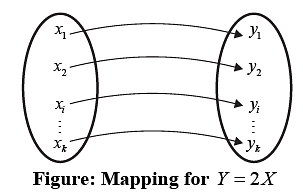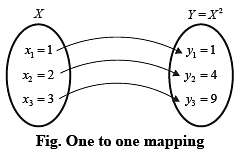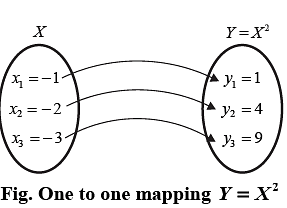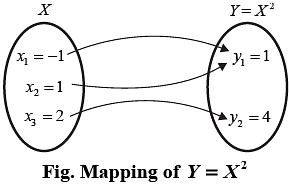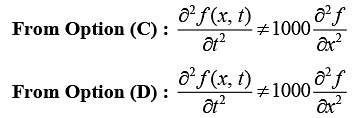Electronics And Communication - ECE 2022 GATE Paper (Practice Test) - Electronics and Communication Engineering (ECE) MCQ
30 Questions MCQ Test GATE ECE (Electronics) Mock Test Series 2025 - Electronics And Communication - ECE 2022 GATE Paper (Practice Test)
Mr. X speaks ______ Japanese ________Chinese.
A sum of money is to be distributed among P, Q, R and S in the proportion 5 : 2 : 4 : 3, respectively. If R get Rs.1000 more than S, what is the share of Q (in Rs.)?
| 1 Crore+ students have signed up on EduRev. Have you? Download the App |
A trapezium has vertices marked as P, Q, R and S (in that order anticlockwise). The side PQ is parallel to side SR. Further, it is given that, PQ = 11 cm, QR = 4 cm, RS = 6 cm and SP = 3 cm. What is shortest distance between PQ and SR (in cm)?
The figure shows a grid formed by a collection of the unit squares. The unshaded unit square in the grid represents a hole.
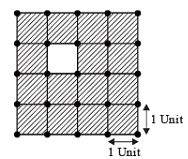
What is the maximum number of squares without a “hole in the interior” that can be formed within the 4 x 4 grid using the unit squares as building blocks?
An art gallery engages a security guard to ensure that the items displayed are protected. The diagram below represents the plan of the gallery where the boundary walls are opaque. The location the security guard posted is identified such that all the inner space (shaded region in the plan) of the gallery is within the line of sight of the security guard.
If the security guard does not move around the posted location and has a 360o view, which one of the following correctly represents the set of ALL possible locations among the locations P, Q, R and S, where the security guard can be posted to watch over the entire inner space of the gallery.
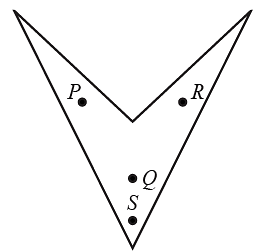
Mosquitoes pose a threat to human health. Controlling mosquitoes using chemicals may have undesired consequences. In Florida, authorities have used genetically modified mosquitoes to control the overall mosquito population. It remains to be seen if this novel approach has unforeseen consequences.
Which one of the following is the correct logical inference based on the information in the above passage?
Consider the following inequalities.
(i) 2x -1 > 7 (ii) 2x - 9 < 1
Which one of the following expressions below satisfies the above two inequalities?
Four points P(0, 1), Q(0, –3), R(–2, –1) and S(2 , –1) represent the vertices of a quadrilateral. What is the area enclosed by the quadrilateral?
In a class of five students P, Q, R, S and T, only one student is known to have copied in the exam. The disciplinary committee has investigated the situation and recorded the statements from the students as given below.
Statement of P : R has copied in the exam.
Statement of Q : S has copied in the exam.
Statement of R : P did not copy in the exam.
Statement of S : Only one of us is telling the truth.
Statement of T : R is telling the truth.
The investigating team had authentic information that S never lies.
Based on the information given above, the person who has copied in the exam is
Consider the following square with the four corners and the center marked as P, Q, R, S and T respectively.
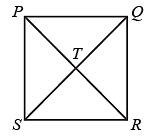
Let X, Y and Z represent the following operations:
X: rotation of the square by 180 degree with respect to the S-Q axis.
Y: rotation of the square by 180 degree with respect to the P-R axis.
Z: rotation of the square by 90 degree clockwise with respect to the axis perpendicular, going into the screen and passing through the point T.
Consider the following three distinct sequences of operation (which are applied in the left to right order).
(1) XYZZ
(2) XY
(3) ZZZZ
Which one of the following statements is correct as per the information provided above?
Consider the two-dimensional vector field ![]() , where
, where![]() and
and ![]() denote the unit vectors along the x - axis and the y-axis, respectively. A contour C in the x-y plane, as shown in the figure, is composed of two horizontal lines connected at the two ends by two semicircular arcs of unit radius. The contour is traversed in the counter-clockwise sense. The value of the closed path integral
denote the unit vectors along the x - axis and the y-axis, respectively. A contour C in the x-y plane, as shown in the figure, is composed of two horizontal lines connected at the two ends by two semicircular arcs of unit radius. The contour is traversed in the counter-clockwise sense. The value of the closed path integral ![]() is
is
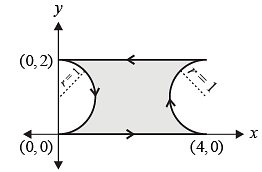
Consider a system of linear equations Ax = b ,
where 
This system of equations admits
The current I in the circuit shown is
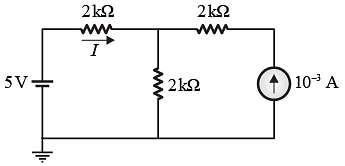
Consider the circuit shown in the figure. The current I flowing through the 10 Ω resistor is
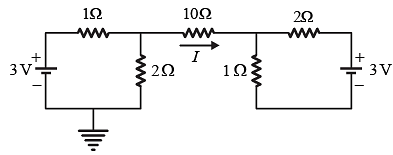
The Fourier transform X (jω) of the signal ![]()
is
Consider a long rectangular bar of direct bandgap p-type semiconductor. The equilibrium hole density is 1017 cm-3 the intrinsic carrier concentration is 1010 cm-3 . Electron and hole diffusion lengths are 2μm and 1μm , respectively. The left side of the bar ( x = 0) is uniformly illuminated with a laser having photon energy greater than the bandgap of the semiconductor. Excess electron-hole pairs are generated ONLY at x = 0 because of the laser. The steady state electron density at x = 0 is 1014 cm-3 due to laser illumination. Under these conditions and ignoring electric field, the closest approximation (among the given options) of the steady state electron density at x = 2μm , is
In a non-degenerate bulk semiconductor with electron density n = 1016 cm-3 , the value of EC -EFn= 200 meV , where EC and EFn denote the bottom of the conduction band energy and electron Fermi level energy, respectively. Assume thermal voltage as 26 meV and the intrinsic carrier concentration is 1010 cm-3 . For n = 0.5 x1016 cm-3 , the closest approximation of the value of ( EC - EFn) , among the given options, is
Consider the CMOS circuit shown in the figure (substrates are connected to their respective sources). The gate width (W) to gate length (L) ratios (W/L) of the transistors are as shown. Both the transistors have the same gate oxide capacitance per unit area. For the p MOSFET, the threshold voltage is –1 V and the mobility of holes is ![]() . For the n MOSFET, the threshold voltage is 1 V the mobility of electrons is
. For the n MOSFET, the threshold voltage is 1 V the mobility of electrons is  .The steady state output voltage V0 is
.The steady state output voltage V0 is
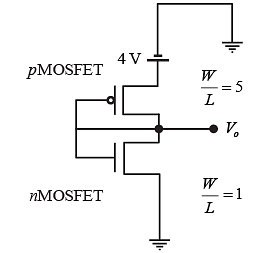
Consider the 2-bit multiplexer (MUX) shown in the figure. For OUTPUT to be the XOR of C and D, the values for A0 , A1 , A2 , and A3 are
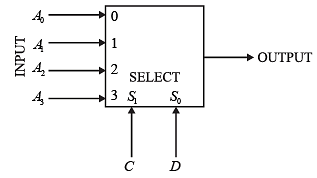
The ideal long channel n MOSFET and p MOSFET devices shown in the circuits have threshold voltages of 1 V and −1 V, respectively. The MOSFET substrates are connected to their respective sources. Ignore leakage currents and assume that the capacitors are initially discharged. For the applied voltages as shown, the steady state voltages are

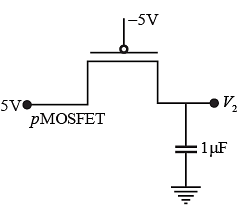
Consider a closed-loop control system with unity negative feedback and KG(s) in the forward path, where the gain ? = 2. The complete Nyquist plot of the transfer function G(s) is shown in the figure. Note that the Nyquist contour has been chosen to have the clockwise sense. Assume G(s) has no poles on the closed right-half of the complex plane. The number of poles of the closed-loop transfer function in the closed right-half of the complex plane is
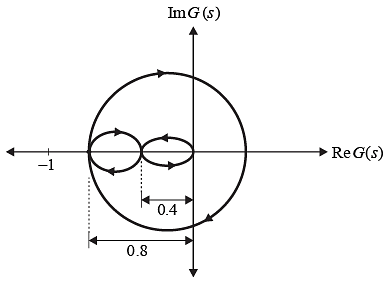
The root-locus plot of a closed-loop system with unity negative feedback and transfer function KG(s) in the forward path is shown in the figure. Note that ? is varied from 0 to ∞. Select the transfer function G(s) that results in the root-locus plot of the closed-loop system as shown in the figure.
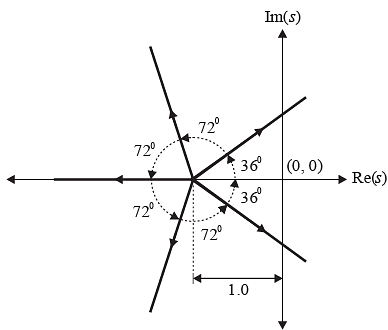
The frequency response H (f) of a linear time-invariant system has magnitude as shown in the figure.
Statement I : The system is necessarily a pure delay system for inputs which are bandlimited to - α ≤ f ≤ α.
Statement II : For any wide-sense stationary input process with power spectral density SX(f) , the output power spectral density SY(f) obeys SY(f) = SX(f) for - α ≤ f ≤ α.
Which one of the following combinations is true?
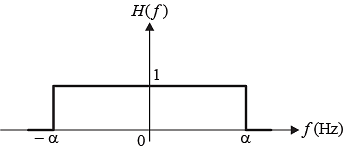
In a circuit, there is a series connection of an ideal resistor and an ideal capacitor. The conduction current (in Amperes) through the resistor is  . The displacement current (in Amperes) through the capacitor is
. The displacement current (in Amperes) through the capacitor is
Consider the following partial differential equation (PDE) 
where a and b are distinct positive real numbers. Select the combination(s) of values of real parameters ε and η such that f ( x, y) = e(εx+ηy) is a solution of the given PDE.
An ideal OPAMP circuit with a sinusoidal input is shown in the figure. The 3 dB frequency is the frequency at which the magnitude of the voltage gain decreases by 3 dB from the maximum value. Which of the options is/are correct?
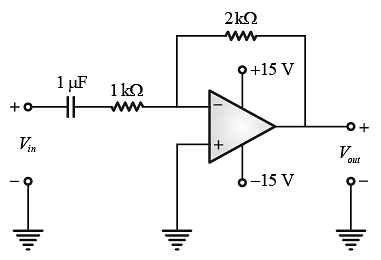
Select the Boolean function(s) equivalent to x + yz , where x,y, and z are Boolean variables, and ‘+’ denotes logical OR operation.
Select the correct statement(s) regarding CMOS implementation of NOT gates.
Let H(X) denote the entropy of a discrete random variable taking ? possible distinct real values. Which of the following statements is/are necessarily true?
Consider the following the wave equation,

Which of the given options is/are solution(s) to the given wave equation?
|
25 docs|263 tests
|
|
25 docs|263 tests
|


